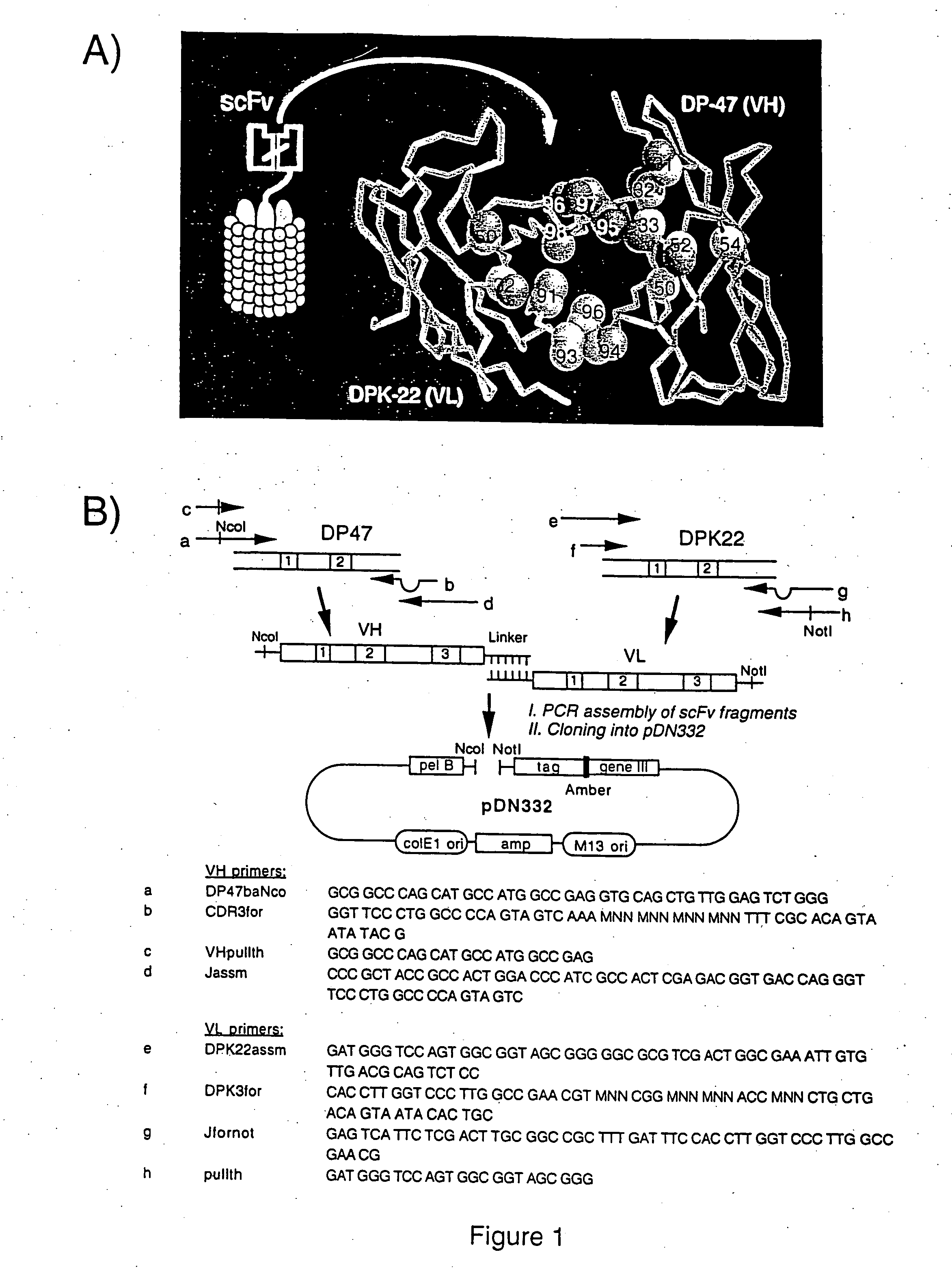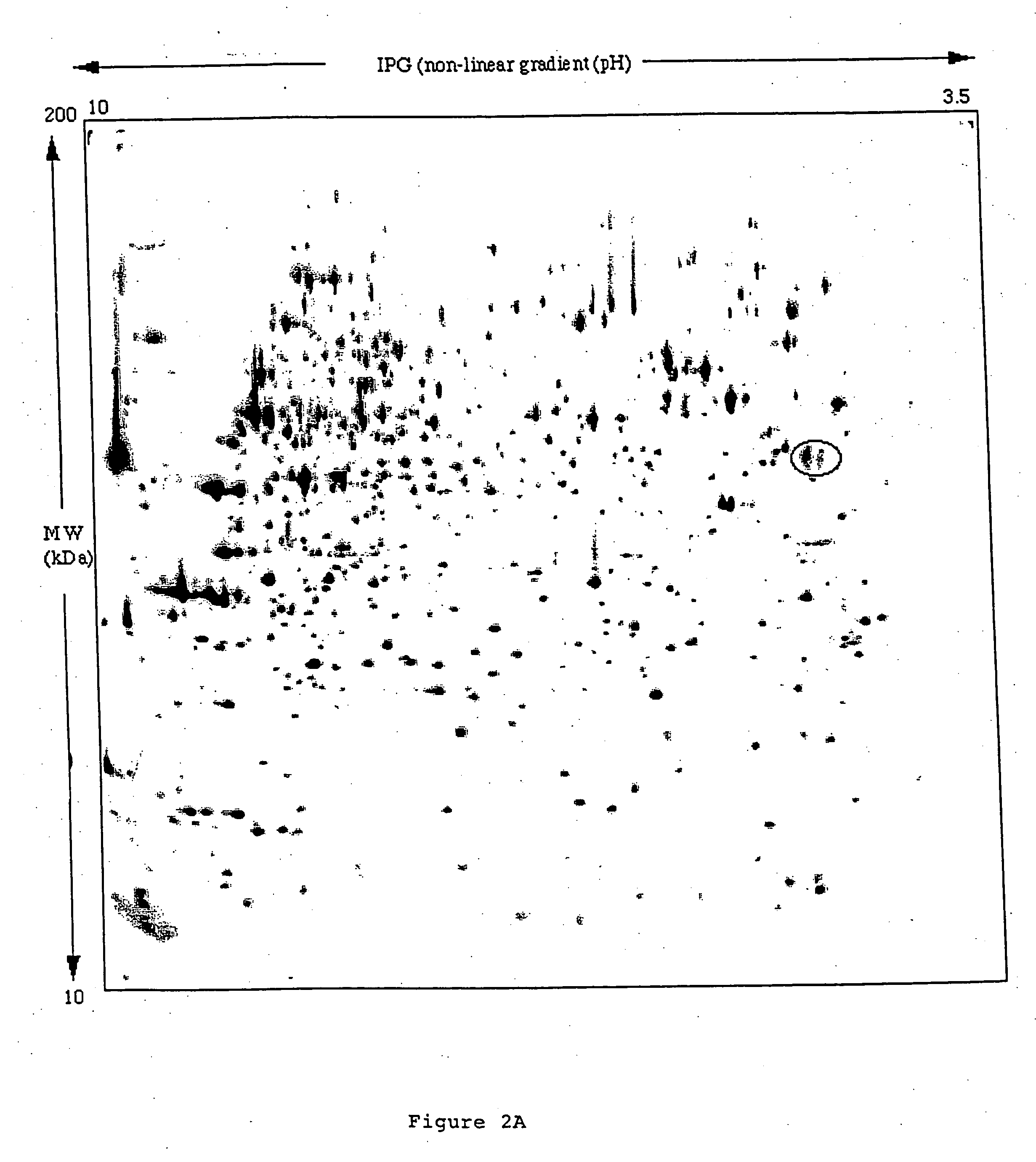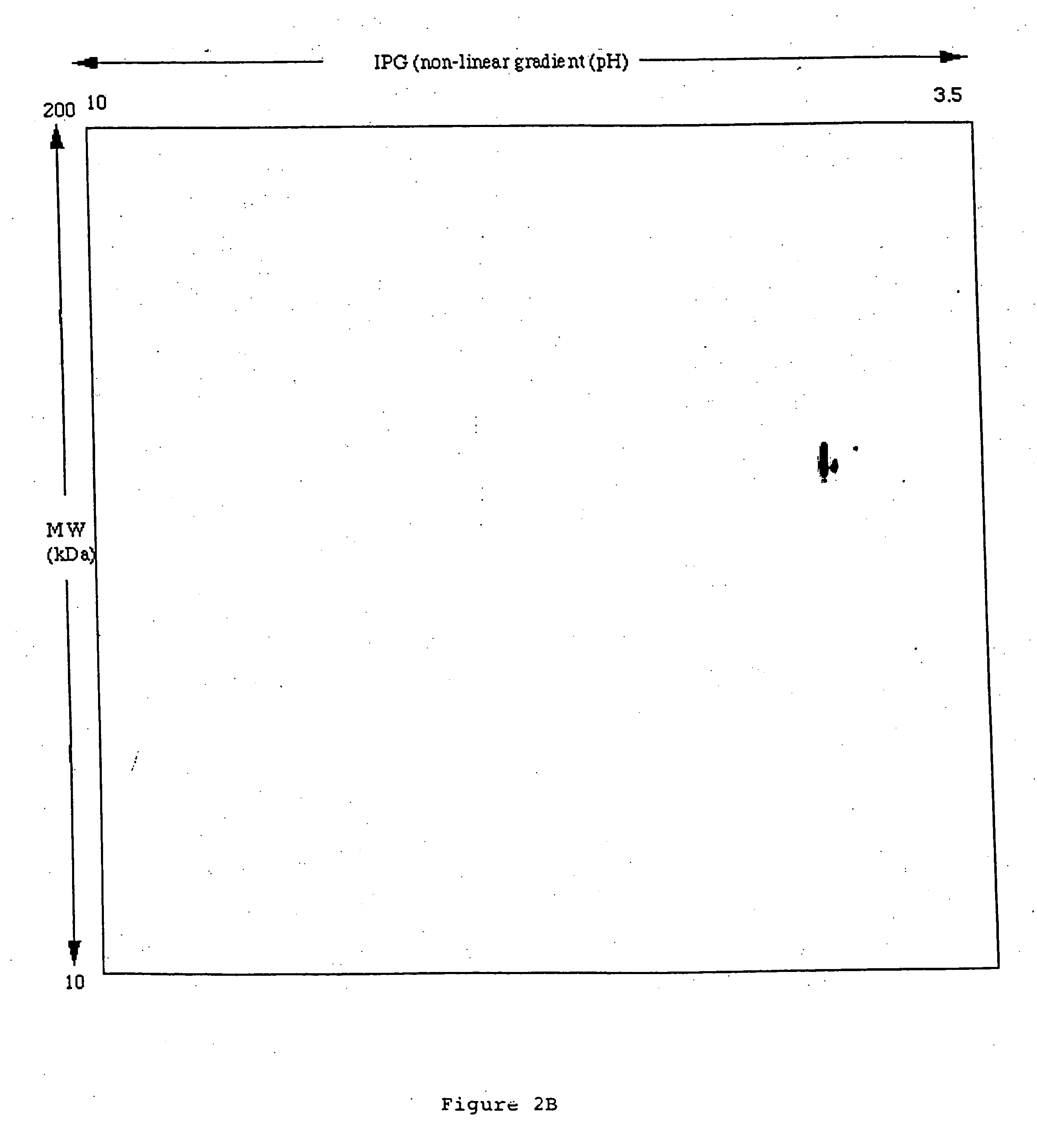Specific binding molecules for scintigraphy, conjugates containing them and therapeutic method for treatment of angiogenesis
a technology of specific binding molecules and scintigraphy, which is applied in the field of specific binding molecules for scintigraphy, conjugates containing them and the therapeutic method for treating angiogenesis, can solve the problems of unsuitable reagents for tumour targeting, imaging, tumour infarction and collapse, etc., and achieve the effect of reducing the toxicity of radiolabelled compounds
- Summary
- Abstract
- Description
- Claims
- Application Information
AI Technical Summary
Benefits of technology
Problems solved by technology
Method used
Image
Examples
example 2
Isolation of a Human scFv Antibody Fragment Binding to the ED-B with Sub-Nanomolar Affinity
[0117] ScFv(E1) was selected to test the possibility of improving its affinity with a limited number of mutations of CDR residues located at the periphery of the antigen binding site (FIG. 1A). We combinatorially mutated residues 31-33, 50, 52 and 54 of the antibody VH, and displayed the corresponding repertoire on filamentous phage. These residues are found to frequently contact the antigen in the known 3D-structures of antibody-antigen complexes. The resulting repertoire of 4×108 clones was selected for binding to the ED-B domain of fibronectin. After two rounds of panning, and screening of 96 individual clones, an antibody with 27-fold improved affinity was isolated (H10; Tables 1 and 2). Similarly to what others have observed with affinity-matured antibodies, the improved affinity was due to slower dissociation from the antigen, rather than by improved kon values (Schier et al. (1996). G...
example 3
Targeting Tumours with a High-Affinity Radiolabelled scFv Specific for the ED-B Domain of Fibronectin
[0122] Radioiodinated scFv(L19) or scFv(D1.3) (an irrelevant antibody specific for hen egg lysozyme) were injected intravenously in mice with subcutaneously implanted murine F9′ teratocarcinoma, a rapidly growing aggressive tumour. Antibody biodistributions were obtained at different time points (FIG. 4). ScFv(L19) and scFv(D1.3) were affinity purified on an antigen column (Neri et al. (1997, Nature Biotechnol. 15, 1271-1273) and radiolabelled with iodine-125 using the Iodogen method (Pierce, Rockford, Ill., USA). Radiolabelled antibody fragments retained >80% immunoreactivity, as evaluated by loading the radiolabelled antibody onto an antigen column, followed by radioactive counting of the flow-through and eluate fractions. Nude mice (12 weeks old Swiss nudes, males) with subcutaneously-implanted F9 murine teratocarcinoma (Neri et al. (1997) Nature Biotechnol. 15, 1271-1273) were ...
example 4
Anti-ED-B Antibodies Selectively Stain Newly-Formed Ocular Blood Vessels
[0124] Angiogenesis, the formation of new blood vessels from pre-existing ones, is a characteristic process which underlies many diseases, including cancer and the majority of ocular disorders which result in loss of vision. The ability to selectively target and occlude neovasculature will open diagnostic and therapeutic opportunities.
[0125] We investigated whether B-FN is a specific marker of ocular angiogenesis and whether antibodies recognising B-FN could selectively target ocular neovascular structures in vivo upon systemic administration. To this aim we stimulated angiogenesis in the rabbit cornea, which allows the direct observation of new-blood vessels, by surgically implanting pellets containing vascular endothelial growth factor or a phorbol ester (FIG. 7). Sucralfate (kind gift of Merck, Darmstadt, Germany) / hydron pellets containing either 800 ng vascular endothelial growth factor (Sigma) or 400 ng ...
PUM
| Property | Measurement | Unit |
|---|---|---|
| wavelength | aaaaa | aaaaa |
| time | aaaaa | aaaaa |
| wavelengths | aaaaa | aaaaa |
Abstract
Description
Claims
Application Information
 Login to View More
Login to View More - R&D
- Intellectual Property
- Life Sciences
- Materials
- Tech Scout
- Unparalleled Data Quality
- Higher Quality Content
- 60% Fewer Hallucinations
Browse by: Latest US Patents, China's latest patents, Technical Efficacy Thesaurus, Application Domain, Technology Topic, Popular Technical Reports.
© 2025 PatSnap. All rights reserved.Legal|Privacy policy|Modern Slavery Act Transparency Statement|Sitemap|About US| Contact US: help@patsnap.com



